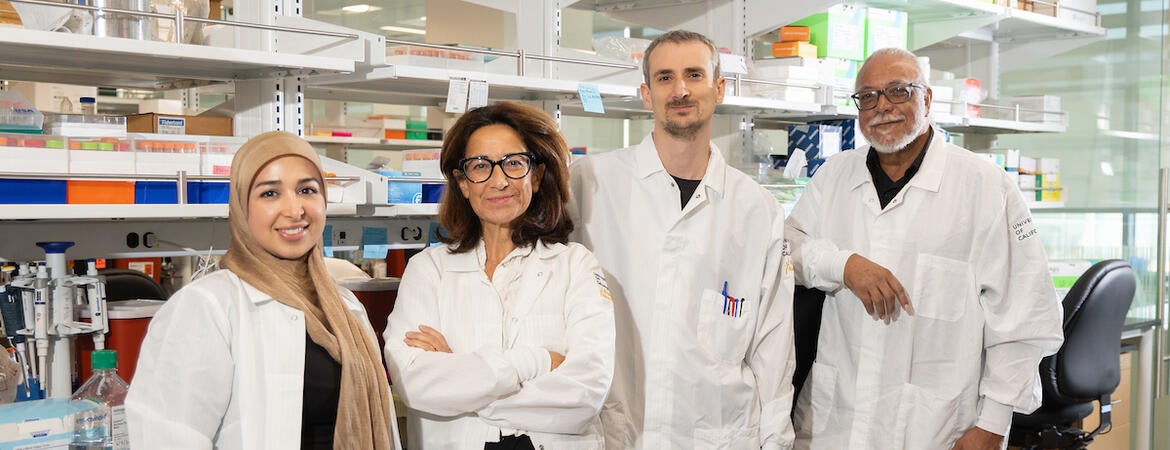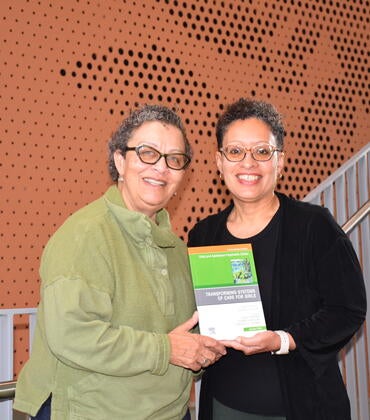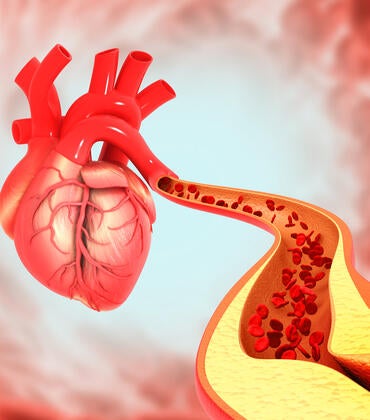
In 2022, nearly 619,000 global deaths due to malaria were caused by Plasmodium falciparum, the most virulent, prevalent, and deadly human malaria parasite. For decades, the parasite’s resistance to all antimalarial drugs has posed a big challenge for researchers working to stop the spread of the disease.
A team led by scientists at UC Riverside, UC Irvine, and Yale School of Medicine has now designed a new drug against malaria and identified its mechanism of action. The researchers found the drug, called MED6-189, is effective against drug-sensitive and drug-resistant P. falciparum strains in vitro as well as in a humanized mouse model (the mice were engineered to have human blood).
The researchers report in the journal Science this week that MED6-189 works by targeting and disrupting not only the apicoplast, an organelle found in P. falciparum cells, but also the vesicular trafficking pathways. They found that this dual mode of action prevents the pathogen from developing resistance, making the drug a highly effective antimalarial compound and a promising new lead in the fight against malaria.
“Disruption of the apicoplast and vesicular trafficking blocks the parasite’s development and thus eliminates infection in red blood cells and in our humanized mouse model of P. falciparum malaria,” said Karine Le Roch, a professor of molecular, cell and systems biology at UCR and the paper’s senior author. “We found MED6-189 was also potent against other zoonotic Plasmodium parasites, such as P. knowlesi and P. cynomolgi.”
MED6-189 is a synthetic compound inspired by a compound extracted from marine sponges. The lab of Christopher Vanderwal, a professor of chemistry and pharmaceutical sciences at UC Irvine, synthesized the compound.
“Many of the best antimalarial agents are natural products, or are derived from them,” he said. “For example, artemisinin, initially isolated from the sweet wormwood plant, and analogues thereof, are critically important for treatment of malaria. MED6-189 is a close relative of a different class of natural products, called isocyanoterpenes, that seem to target multiple pathways in P. falciparum. That is beneficial because had only one pathway been targeted, the parasite could develop resistance to the compound more quickly.”
When researchers at GSK, a pharmaceutical company in Spain, administered MED6-189 to the mice infected with P. falciparum, they found it cleared the mice of the parasite. In collaboration with Choukri Ben Mamoun, a professor of medicine and microbial pathogenesis at the Yale School of Medicine, the team also tested the compound against P. knowlesi, a parasite that infects monkeys, and found it worked as intended, clearing the monkey’s parasite-infected red blood cells.
Next, the team plans to continue the optimization of MED6-189 and further confirm the modified compound’s mechanisms of action using a systems biology approach. Systems biology is a biomedical research approach to understanding the larger picture of a biological system. It offers researchers a way to examine how different living organisms and cells interact at larger scales.
Le Roch, Vanderwal, and Ben Mamoun were joined in the research by fellow scientists at the Stowers Institute for Medical Research in Kansas City, Missouri; GSK; and the University of Georgia.
The research was supported by a grant to Le Roch, Vanderwal, and Ben Mamoun and the National Institute of Allergy and Infectious Diseases of the National Institutes of Health. At UCR, Le Roch directs the Center for Infectious Disease and Vector Research.
The title of the research paper is “A Potent Kalihinol Analogue Disrupts Apicoplast Function and Vesicular Trafficking in P. falciparum Malaria.”
Header image shows four coauthors on the research paper. From left to right are Zeinab Chahine (first author of the research paper), Karine Le Roch, Thomas Hollin, and Jacques Prudhomme. (UCR/Stan Lim)



